Year 10
Report: Mouse trap dragster redesign
Summary of task
This task was part of a unit of work designed to investigate forces and laws of motion. Students participated in a series of lessons covering Newton’s Laws of Motion, forces and simple machines. Teachers provided students with skills in research and scientific report writing; graphing; and speed, distance and time calculations so that they were able to work independently on the task.
Students were given a mouse trap dragster and asked to describe its existing features. They were then given a design brief that required them to modify the dragster so that it either travelled as fast or as far as possible. They needed to test their design, record results and draw a conclusion based on those results.
Achievement Standards
Design and Technologies
By the end of Year 10, students explain how people working in design and technologies occupations consider factors that impact on design decisions and the technologies used to produce products, services and environments. They identify the changes necessary to designed solutions to realise preferred futures they have described. When producing designed solutions for identified needs or opportunities, students evaluate the features of technologies and their appropriateness for purpose for one or more of the technologies contexts.
Students create designed solutions for one or more of the technologies contexts based on a critical evaluation of needs or opportunities. They establish detailed criteria for success, including sustainability considerations, and use these to evaluate their ideas and designed solutions and processes. They create and connect design ideas and processes of increasing complexity and justify decisions. Students communicate and document projects, including marketing for a range of audiences. They independently and collaboratively apply sequenced production and management plans when producing designed solutions, making adjustments to plans when necessary. They select and use appropriate technologies skilfully and safely to produce high-quality designed solutions suitable for the intended purpose.
Digital Technologies
By the end of Year 10, students explain the control and management of networked digital systems and the security implications of the interaction between hardware, software and users. They explain simple data compression, and why content data are separated from presentation.
Students plan and manage digital projects using an iterative approach. They define and decompose complex problems in terms of functional and non-functional requirements. Students design and evaluate user experiences and algorithms. They design and implement modular programs, including an object-oriented program, using algorithms and data structures involving modular functions that reflect the relationships of real-world data and data entities. They take account of privacy and security requirements when selecting and validating data. Students test and predict results and implement digital solutions. They evaluate information systems and their solutions in terms of risk, sustainability and potential for innovation and enterprise. They share and collaborate online, establishing protocols for the use, transmission and maintenance of data and projects.
By the end of Year 10, students recognise the connection between simple and compound interest. They solve problems involving linear equations and inequalities. They make the connections between algebraic and graphical representations of relations. Students solve surface area and volume problems relating to composite solids. They recognise the relationships between parallel and perpendicular lines. Students apply deductive reasoning to proofs and numerical exercises involving plane shapes. They compare data sets by referring to the shapes of the various data displays. They describe bivariate data where the independent variable is time. Students describe statistical relationships between two continuous variables. They evaluate statistical reports.
Students expand binomial expressions and factorise monic quadratic expressions. They find unknown values after substitution into formulas. They perform the four operations with simple algebraic fractions. Students solve simple quadratic equations and pairs of simultaneous equations. They use triangle and angle properties to prove congruence and similarity. Students use trigonometry to calculate unknown angles in right-angled triangles. Students list outcomes for multi-step chance experiments and assign probabilities for these experiments. They calculate quartiles and inter-quartile ranges.
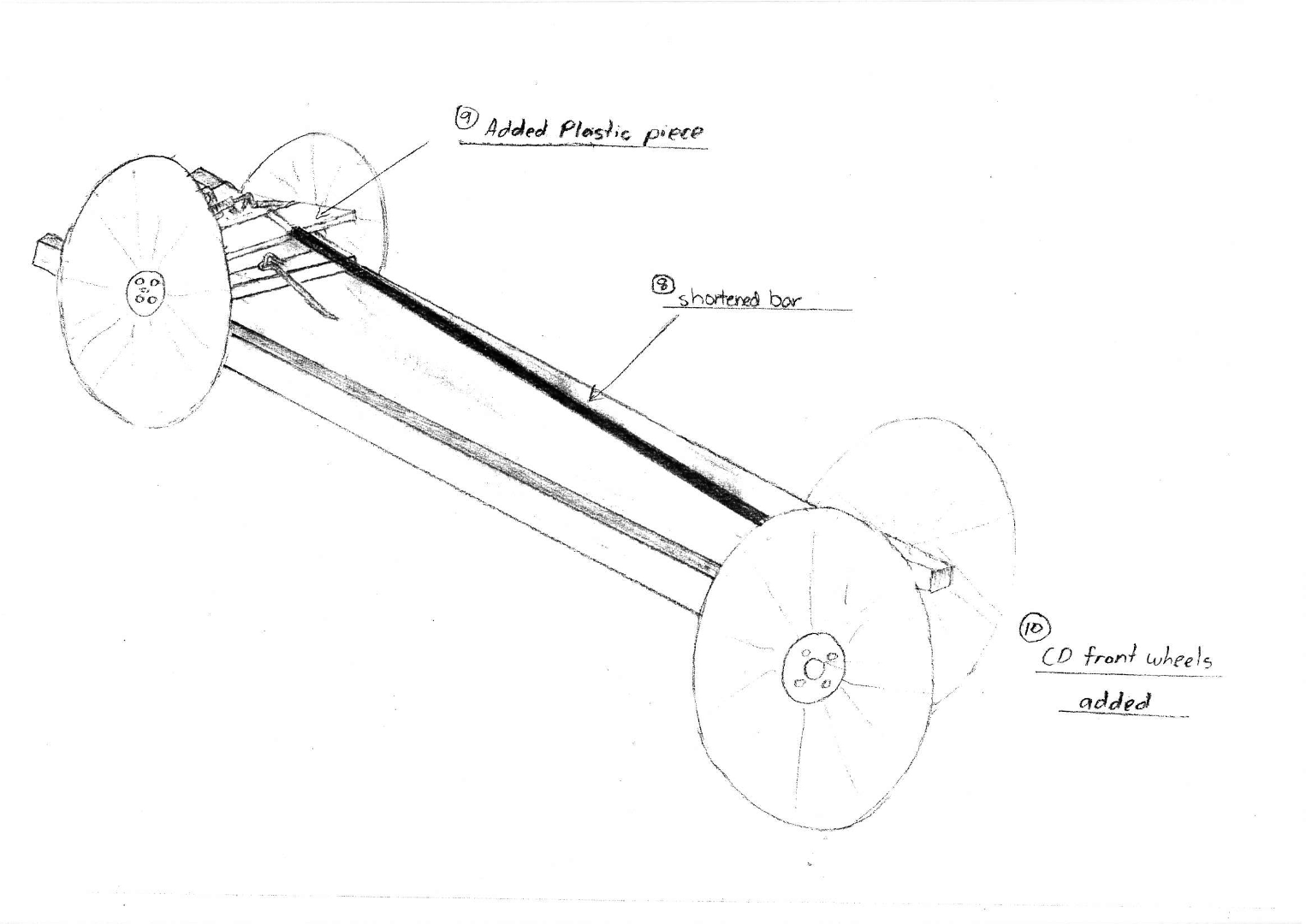 1
Technologies
1
Technologies
Illustrates changes to improve original design
-
Annotations
-
1
Technologies
Illustrates changes to improve original design
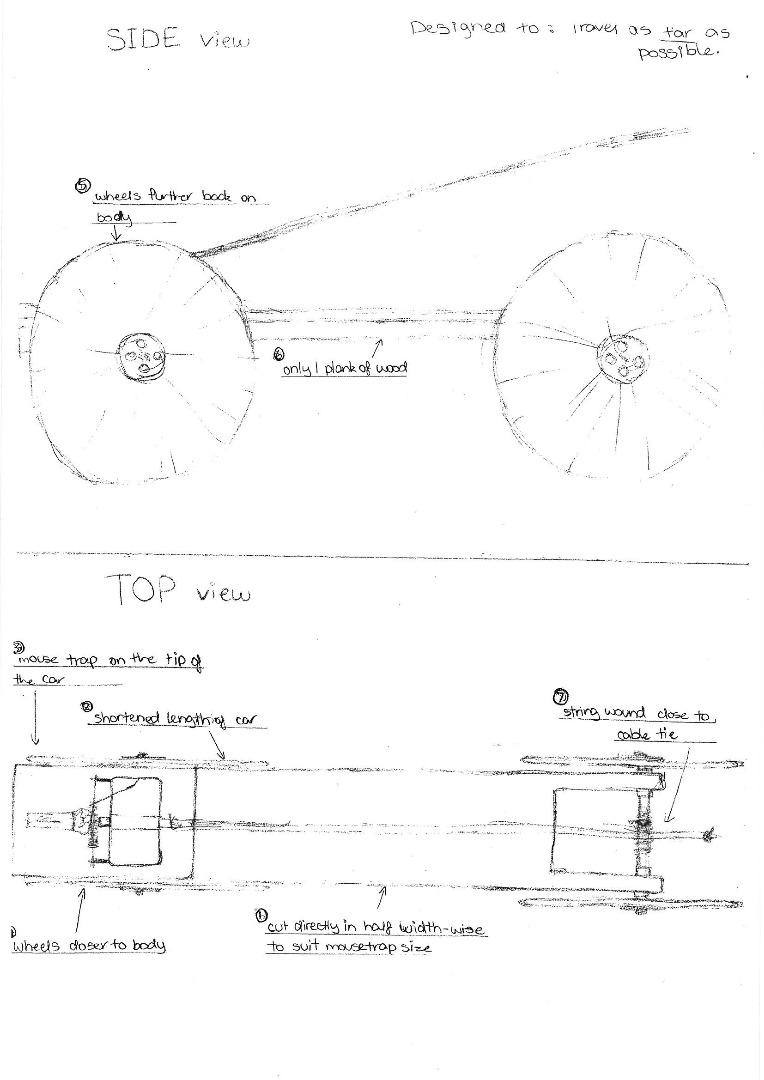 1
Technologies
1
Technologies
Suggests changes to design to fit the design brief 2 Technologies
Justifies further changes to meet design brief
-
Annotations
-
1
Technologies
Suggests changes to design to fit the design brief -
2
Technologies
Justifies further changes to meet design brief
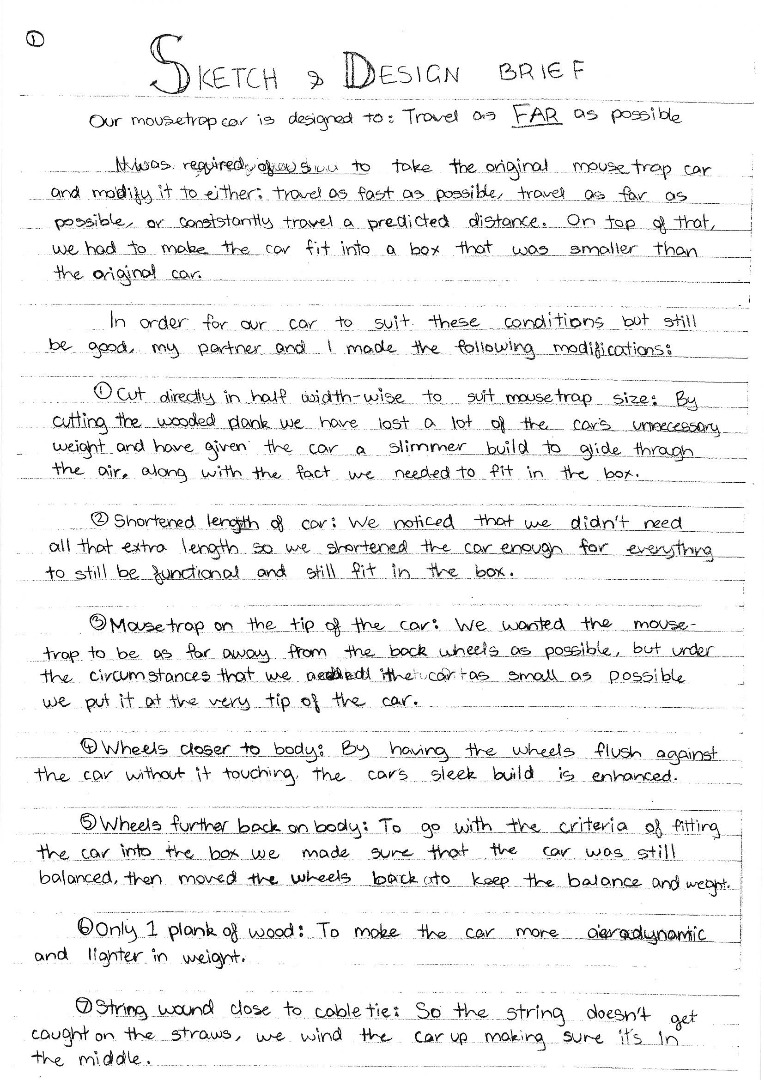 1
Science
1
Science
Identifies the weight, size and air resistance of the car as key properties affecting travel distance and makes appropriate improvements 2 Technologies
Justifies a design change with the need for balance
-
Annotations
-
1
Science
Identifies the weight, size and air resistance of the car as key properties affecting travel distance and makes appropriate improvements -
2
Technologies
Justifies a design change with the need for balance
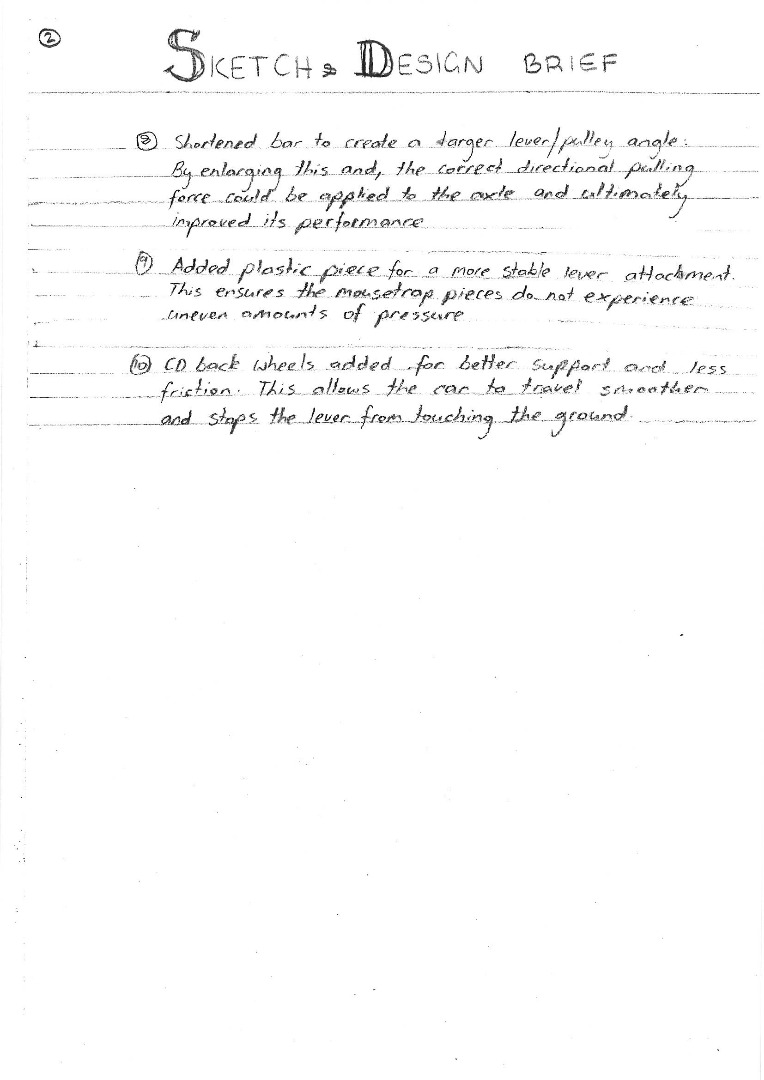 1
Science
1
Science
Demonstrates understanding of the mechanical forces acting on the car 2 Science
Uses knowledge of material properties to improve the performance of the car
-
Annotations
-
1
Science
Demonstrates understanding of the mechanical forces acting on the car -
2
Science
Uses knowledge of material properties to improve the performance of the car
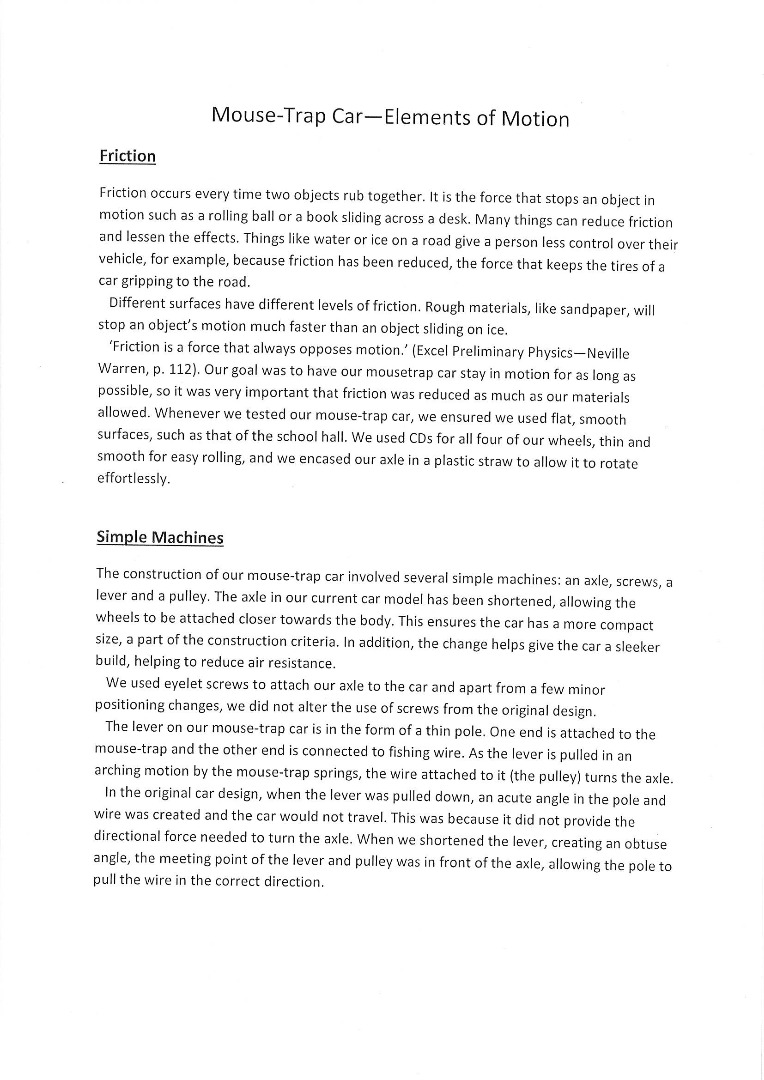 1
Science
1
Science
Describes the phenomenon of friction as a physical force and explains its relationship to motion 2 Science
Identifies friction as the key phenomenon to consider in the given task 3 Science
Describes the function of the key components of the car, how they have been changed and gives justification for the alterations based on reasoning 4 Mathematics
Recognises the differences between acute and obtuse angles and the impact the angle has on the function of the axle
-
Annotations
-
1
Science
Describes the phenomenon of friction as a physical force and explains its relationship to motion -
2
Science
Identifies friction as the key phenomenon to consider in the given task -
3
Science
Describes the function of the key components of the car, how they have been changed and gives justification for the alterations based on reasoning -
4
Mathematics
Recognises the differences between acute and obtuse angles and the impact the angle has on the function of the axle
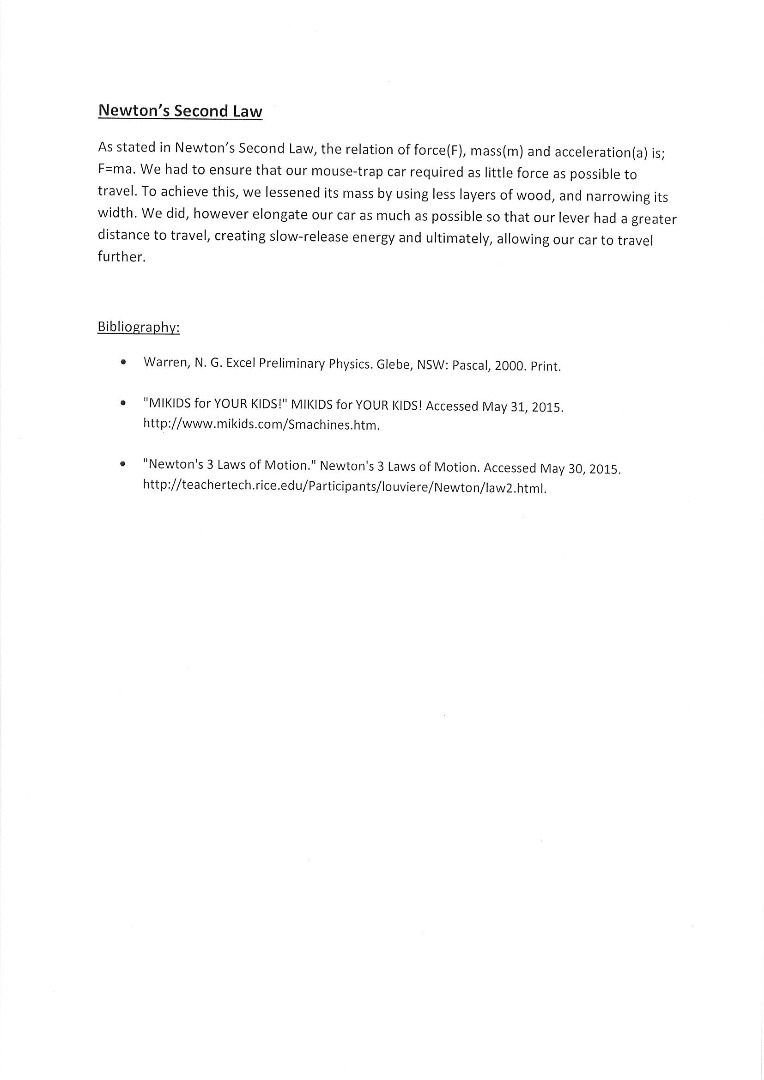 1
Science
1
Science
Describes Newton's Second Law of Motion and how it applies to the given problem 2 Science
Demonstrates understanding of the concept of energy
-
Annotations
-
1
Science
Describes Newton's Second Law of Motion and how it applies to the given problem -
2
Science
Demonstrates understanding of the concept of energy
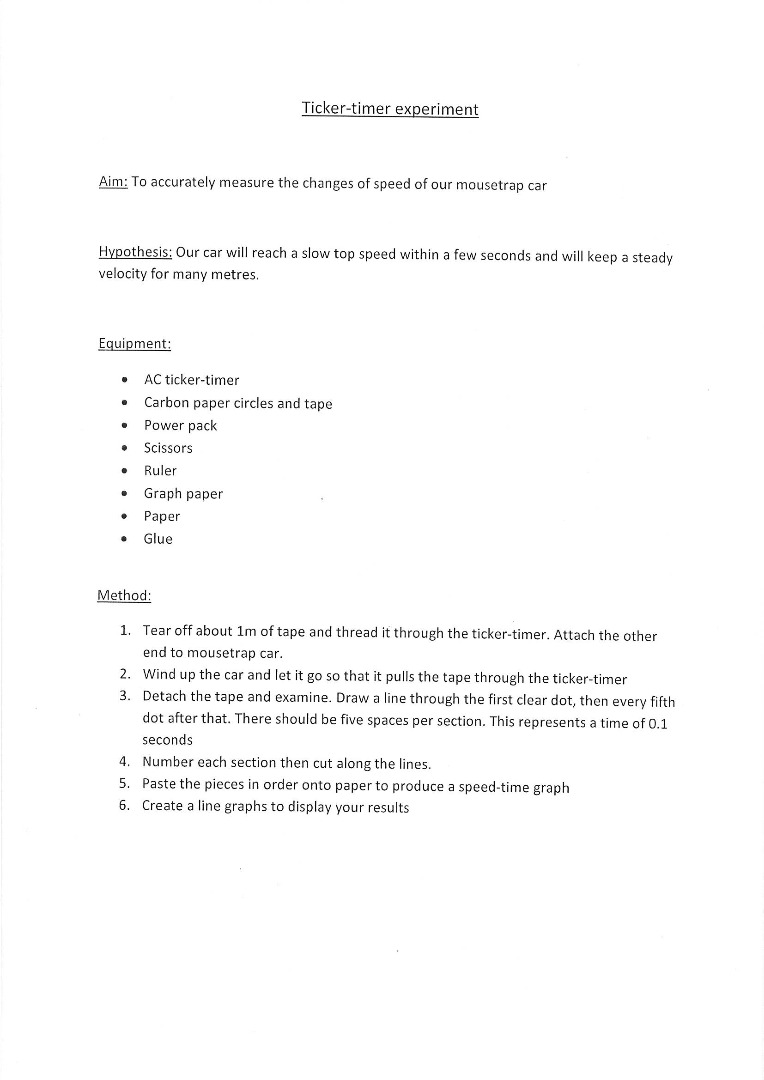 1
Science
1
Science
Suggests a plausible hypothesis based on the reasoning demonstrated in the design phase 2 Science
Gives logical sequence of steps that describe the method of measurement
-
Annotations
-
1
Science
Suggests a plausible hypothesis based on the reasoning demonstrated in the design phase -
2
Science
Gives logical sequence of steps that describe the method of measurement
 1
Mathematics
1
Mathematics
Collects and presents data in a table 2 Mathematics
Calculates average speed from the data collected
-
Annotations
-
1
Mathematics
Collects and presents data in a table -
2
Mathematics
Calculates average speed from the data collected
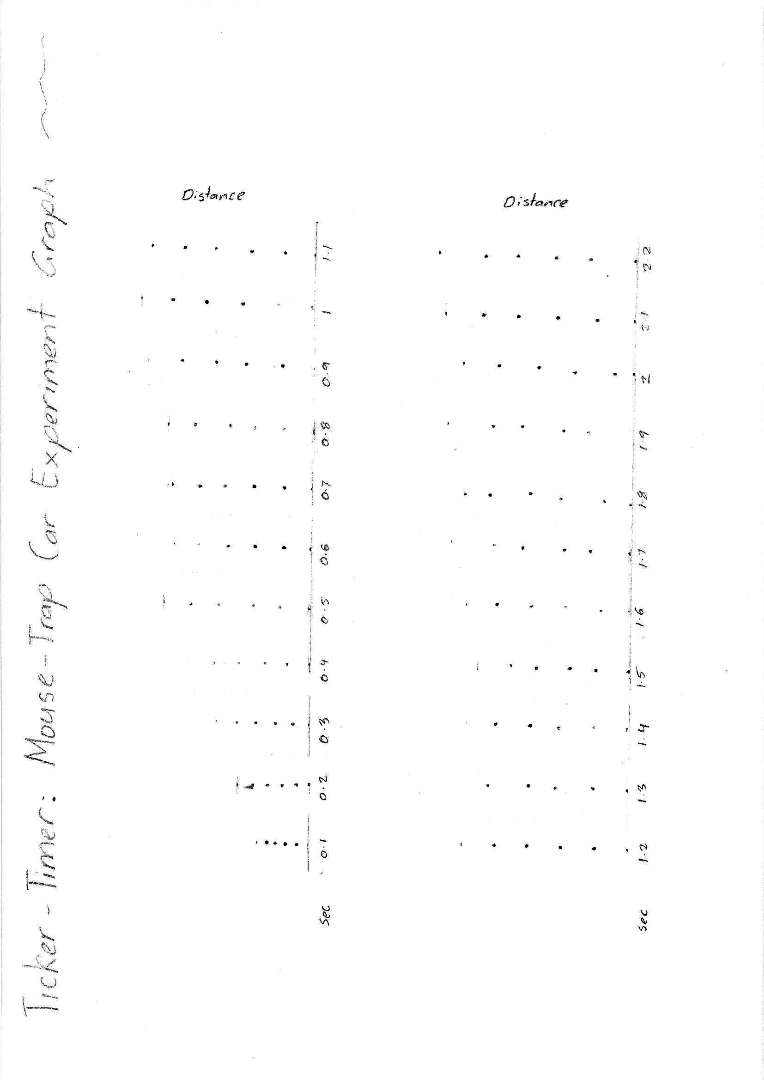 1
Mathematics
1
Mathematics
Calculates average speed from the data collected
-
Annotations
-
1
Mathematics
Calculates average speed from the data collected
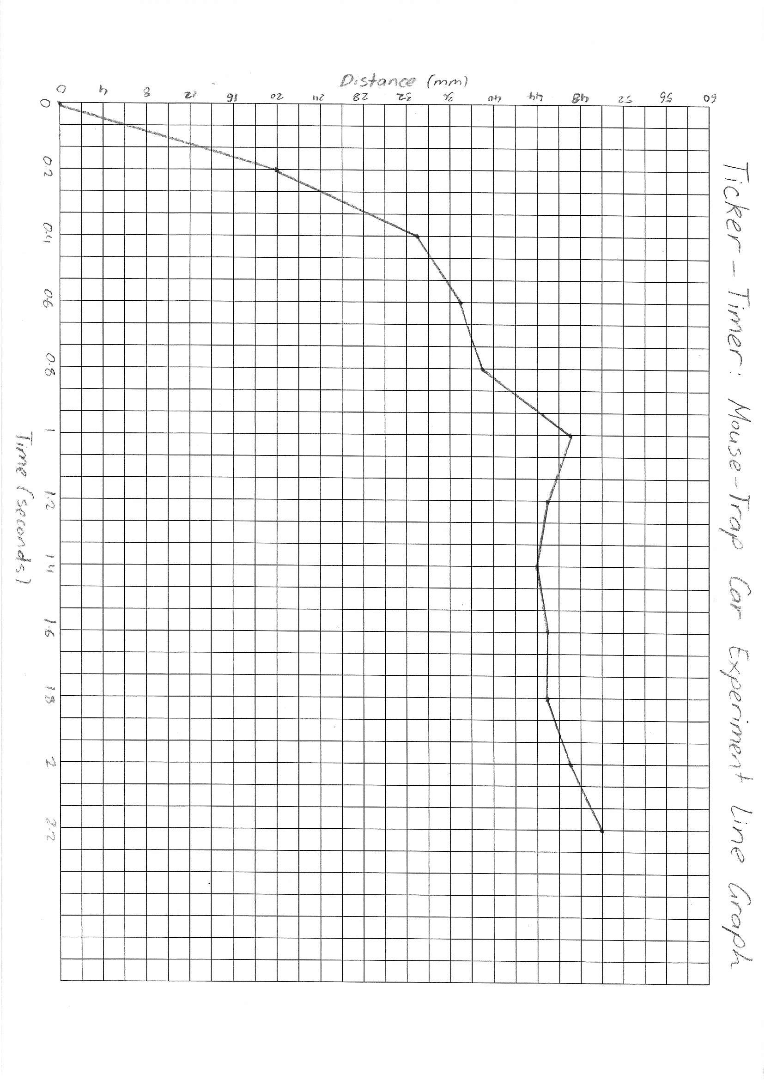 1
Science
1
Science
Displays the data in a segmented line graph
-
Annotations
-
1
Science
Displays the data in a segmented line graph
 1
Science
1
Science
Evaluates the experimental method in detail and identifies several causes for errors in results 2 Science
Draws the conclusion that the flaws identified in the experimental method do not allow for validation of the hypothesis
-
Annotations
-
1
Science
Evaluates the experimental method in detail and identifies several causes for errors in results -
2
Science
Draws the conclusion that the flaws identified in the experimental method do not allow for validation of the hypothesis